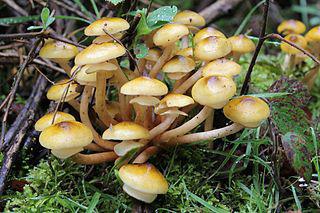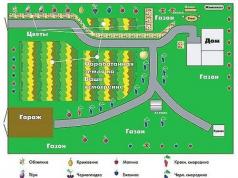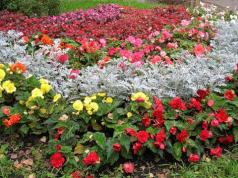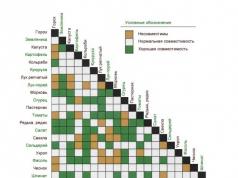In autumn, the forest is especially beautiful and fresh. The golden-red crowns of the trees, the rustling of leaves underfoot, the pristine silence and the special mushroom smell bring pleasure to anyone. When another family of honey mushrooms falls into the basket, joy knows no bounds. These mushrooms are very tasty in any form: pickled, fried with eggs, stewed with potatoes or boiled in soup. The main thing is not to collect inedible ones that can cause poisoning. Every person should know how to distinguish false mushrooms from real ones. Picking mushrooms and eating them must follow all the rules, compliance with which is mandatory for anyone, even an experienced mushroom picker.
How to choose the right honey fungus based on its cap?
The color of mushrooms largely depends on the place where they grow. The amount of sun rays and the degree of their penetration through the forest thicket also play a special role. But still, there are several special signs, having studied which you will certainly know how to distinguish false honey mushrooms from real ones. First, pay attention to the hat. In edible ones, it is light brown in color, slightly muted, with small dark scales clearly visible on it. False honey mushrooms usually have a brick or gray-yellow cap. However, you will not find scales on it.
The color of the record also plays a special role. If it is creamy, white-yellowish or light brown, then feel free to cut the mushroom. It is suitable for consumption and will delight you with a delicious lunch at home. In false mushrooms, the plate is yellow if they are young, and green or olive if they are old. Carefully examine the mushroom for the presence or absence of these signs and only then decide whether or not to put it in your basket.
How to distinguish false honey mushrooms from real ones by the stem?
If the hat did not help you, and you continue to doubt, pay attention to another part of your forest find. You can also tell a lot about a particular mushroom by looking at its stem. For example, false and edible honey mushrooms have completely different morphological characteristics. On the latter, the first thing you will notice on the leg is the so-called “skirt” - a small edging that is located just below the cap. All mushroom pickers know this “ring” and often use it to determine whether a mushroom can be taken or not.
Remember that some false honey mushrooms also have a small “skirt”, only in them it is weakly expressed. Therefore, if you see something similar to the remains of a “ring” on the stem of a mushroom, it is better to leave it in the forest. Also pay attention to the height. If the length of the stem is 5-10 centimeters, then most likely the mushrooms are inedible. In an ordinary real honey mushroom, it is no more than 4-6 centimeters. Of course, there are exceptions. Meadow honey mushrooms, absolutely edible, reach a height of 0.3 meters. Therefore, keep this in mind when you go into the forest for another portion of delicious mushrooms.
How to recognize false honey mushrooms by smell and taste?
These are also very important characteristics that will help you not make mistakes. False and edible honey mushrooms differ primarily in their smell. It plays a particularly important role; it’s easy to determine which honey mushroom is in front of you and whether it’s suitable for preparing a tasty dish. The edible variety has a pronounced mushroom aroma, a little sharp, but pleasant and fresh. If the mushroom is false, it will have an earthy smell. Of course, each person has their own characteristics of aromas; in this matter we are individual. And if for one the mushroom smells amazing, then another will doubt its authenticity. Therefore, first of all, pay attention to the appearance of mushrooms.
There may be a situation where you didn’t notice any of the signs listed above and ended up collecting a full bucket of false mushrooms. When consuming them, try to carefully recognize their taste. There is an opinion that inedible honey mushrooms are a little bitter. But again, your opinion will be subjective, so it’s better not to take risks. In addition, some types of false honey mushrooms lose their “bitterness” during heat treatment.
Differences between summer mushrooms

This type of mushroom grows almost all year round, with the exception of very severe cold weather. Honey mushrooms can be collected in spring, summer and autumn, with their peak growth occurring in September-October. During the summer months we can also collect a lot of honey mushrooms, but they are fundamentally different from the autumn months. They usually have very large caps and legs, which makes them appear inedible. How to distinguish false honey mushrooms from real ones if they grew in the summer? Here again, pay attention to the top of the mushroom. Although the cap of the summer honey fungus sometimes reaches 10 centimeters in diameter, it is usually thin-walled, its edges are slightly curled inward, and in the middle it is also completely covered with something similar to a cobweb. Its color is yellowish-brown. It has plates of rusty, white or brown shades, which only darken with age. The stem of summer mushrooms sometimes grows very long, but at the same time it remains brown and has a “skirt” and scales. Instead, the false summer honey fungus is easy to identify. Its stem and cap are bright yellow, an unpleasant, poisonous color. The surface is smooth, there are no scales on it.
Other tricks
Some useful tips will help you distinguish false honey mushrooms from real ones. For example, when you cut a mushroom, carefully examine its “insides.” They should not give off an unpleasant odor, they should not change their color: become darker or browner, or acquire a poisonous hue. Before going into the forest, be sure to read the encyclopedia, the section on real and false honey mushrooms. There are detailed descriptions of both of them, with pictures and photographs.
In addition, they will help you distinguish edible honey mushrooms and spores that are located inside the cap. Shake the mushroom over a piece of paper or your palm and they will fall out. In real mushrooms, the spores are white or completely colorless. Shaped like an egg or an ellipse. They are completely smooth. In false mushrooms they are dark: purple or brick.
And the last piece of advice - take a bite of the mushroom you doubt, chew it and spit it out. False honey mushrooms will have a bitter taste. But remember that this procedure is dangerous and can cause poisoning, so it’s better not to take risks.
Edible false mushrooms
Yes, this happens too. These mushrooms include the sulfur-plated false honey fungus. It grows from late summer and throughout September-October. They can usually be found in rotting tree trunks, roots, and stumps. The color of the cap of very young honey mushrooms is light yellow, then it turns into brown or rusty. Its surface, unlike real mushrooms, is smooth and moist. In wet weather it becomes sticky. The plates of such mushrooms are gray, as their name suggests. Such mushrooms are considered quite edible.
Brick-red false honey fungus is also boiled, stewed, salted and pickled. This is done by residents of Japan and the USA - there this mushroom is considered quite edible. The stem of this variety will tell you what false honey mushrooms look like: it is thin, hollow inside and slightly curved. The plates of very young individuals are yellow, then they darken to a chocolate color. The hat is usually made of brick, it is dry and absolutely smooth.
Despite the fact that these mushrooms are prepared and consumed, it is still better not to do this. Risk is a noble cause, but when it comes to health and even life, it is better to refrain from rash actions and use proven and reliable methods.











